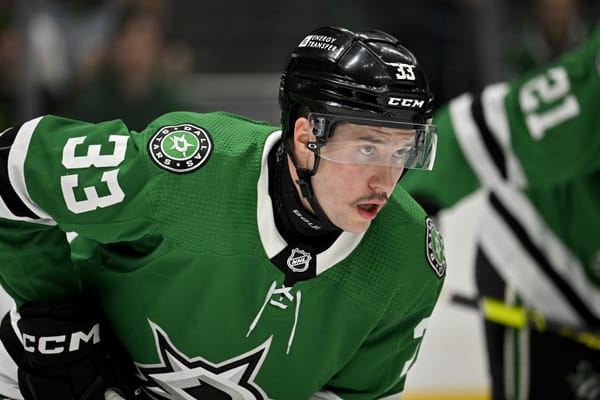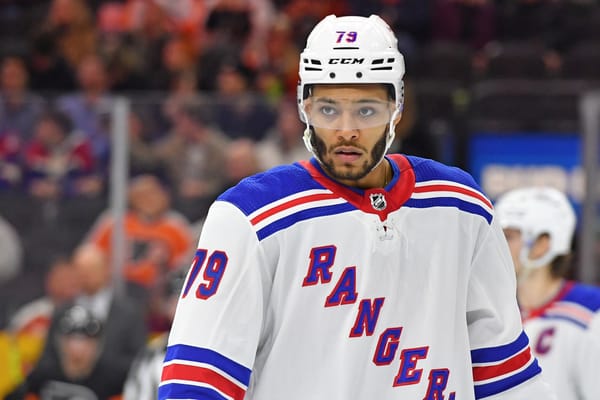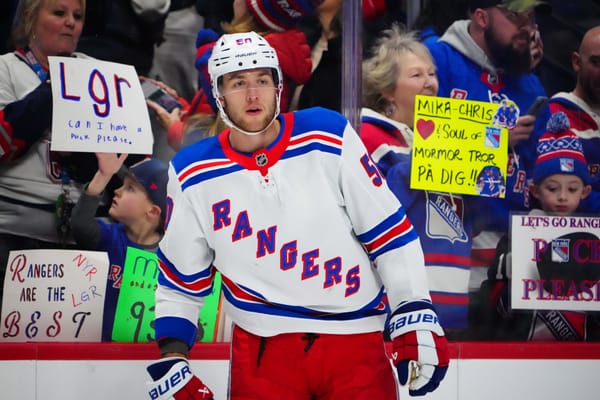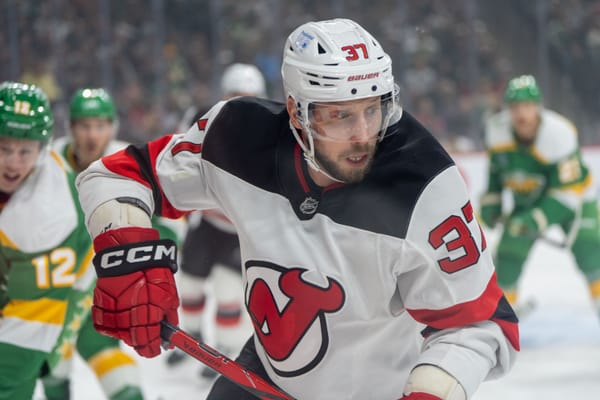The Rangers Should Sell Off One More Time
It can be tempting, I know, to lose yourself into what the Rangers have become. They’re competent these days, and on most night, well, just downright fun.
The trade deadline is only five weeks away after all, and the Rangers are sort-of-kind-of-but-not-really close to a Wild Card spot — 10 points out with two games in hand. Because of this, or maybe because it’s the Rangers and these questions always exist, John Davidson was already asked about moving forward. His answer was surprisingly honest:
JD on trade deadline.
— Vince Z. Mercogliano (@vzmercogliano) January 10, 2020
"We have to be ready for both sides... You’re in the hunt & a week later, you’re out of the hunt... The vision that I have is, whatever we do, we’re dealing w/ the business of hockey & the business of big picture trying to become a championship team."#NYR
This is about as good of a response as you could hope for given the circumstances. The Rangers are nearly two years removed from “The Letter,” have already been the hard sellers for two years running, and finally have some pieces in place that can help them become true contenders. While the team can likely eye next year as the first year to really gun for the playoffs, they need to be careful about what decisions they make moving toward that goal.
Which brings me to the point of this article: The Rangers should probably sell off just one more time.
I get it, we’re reaching the addicted status of hording draft picks and prospects. The Rangers have a competent forward group, a young core of defensemen that are worth keeping moving forward, and a three-headed goalie monster that will materialize into a long-term starter by the start of next year. Why oh why would you sell off yet again when you can finally start building, you ask.
Well ... because it makes sense.
The selloff really falls into three categories: 1) Have to trade, 2) Should be taking offers through the deadline, 3) See if anything is out there.
Alexandar Georgiev — and to an extent Lias Andersson — fall into the first category for obvious reasons. Andersson wants out of the organization and the Rangers have a three-headed goalie situation that has to end. That, at the very least, is easy.
Although in the case of Andersson there was recently a bit of a breakthrough in communication, so there’s still a slim chance he makes his way back to New York.
There has been a thaw in the relationship between Rangers and Lias Andersson, Post has learned. Andersson and John Davidson have been communicating directly for about the last 10 days. Andersson has begun to skate/practice with Division II Kungälvs IK, with NYR approval.
— Larry Brooks (@NYP_Brooksie) January 21, 2020
From there things complicate. I have been dead wrong about Ryan Strome’s ability to match (and exceed) last year’s offense — I didn’t see a Panarin pairing being a permanent fixture, but it is still worth admitting he’s brought more offense to the table than I thought possible — but he’s a viable candidate for the “should trade” bin as well. Is he going to have a career year offensively? Yes. Can he continue this trend moving forward? So long as he plays with Panarin and only Panarin, again yes. Can someone else do the same things with Panarin as Strome? Yes. Yes. Yes.
Here’s the problem with Strome: He’s going to be expensive. The Rangers could drag Strome to arbitration this summer (he has one year left under RFA status) and prolong this another year for around $4-million, but that’s a short term solution. Strome likely has never had more trade value than he does right now, and will if this trend continues by the February trade deadline. Is it good business to keep a guy around who only fits into one box? Probably not. Look no further than Cam Atkinson’s 41-goal campaign paired with Panarin last year, and his 12-14-26 stat line in 38 games this year without him.
Sure, if the Rangers want to keep Strome around as Panarin’s trigger man for around what he’s making now, that can be defended, but he’s going to want and get more. Throw him in the bin and see what you get for him at the deadline, I’m sure general managers would drool over his RFA status, and the fact that he’s not a true rental can jack the price up.
Kreider, who was named Panarin’s replacement for the 2020 All-Star Game, is a more delicate and complicated situation, one that takes him into the second tier of “should be taking offers through the deadline.” Much like Mats Zuccarello and Kevin Hayes last year, keeping Kreider past the trade deadline forces the team’s hand. They won’t win a Stanley Cup, and Kreider can pretty much demand whatever he wants since the organization can’t afford to lost him for nothing. Considering the two sides haven’t had serious contract talks for a year at this point, I doubt Kreider is willing to listen to all the reasons why he should come cheaper than the seven-year, $49-million figure Anders Lee got last year from the Islanders, or the five-year, $35-million deal James van Riemsdyk signed in free agency with the Flyers.
We’ve discussed Kreider and his future at length, and it’s also worth noting the organization very nearly shipped him to Colorado at the draft last year as well. Is it too late to mend fences? Probably not, since Kreider doesn’t seem bothered by the situation and has been a trooper through this uncertain time, but I don’t see him taking a hometown discount either.
The final category falls to players like Jesper Fast, Tony DeAngelo, Brady Skjei, Marc Staal (lol), and I suppose on some cosmic level Jacob Trouba (there are a few logistical reasons why that’s a bad idea that have nothing to do with on-ice play, but I suppose if a team wants to blow the Rangers away...).
For the Rangers this poses an interesting situation. Selling off Kreider and Strome would hurt the team’s small playoff chances this year, and could put the team in a very similar “fun but not consistently good” for one more season. That’s not exactly ideal when you’ve already spent the first year of Panarin’s and Trouba’s monster extensions on the outside looking in of the playoff picture. Intentionally doing it for two straight years seems to make even less sense on the surface.
The foundation of what you could get from one more hit is what pushes this over the top for me. The Rangers have a plethora of young talent already on the team (Filip Chytil, Kaapo Kakko, Brett Howden, DeAngelo, Adam Fox, and Ryan Lindgren), along with another crop of even younger players who are close to being NHL ready (Nils Lundkvist, K’Andre Miller, Vitali Kravtsov). The Rangers already have cap decisions looming in their future, and tying up roughly $11-million in Strome and Kreider (assuming Strome goes to arbitration and gets a bridged salary) just prolongs that problem.
This year’s draft is loaded loaded, and Kreider should be able to fetch a pick (even a late one) from this crop. Strome might be able to as well, especially if he keeps up his near PPG pace since the Rangers can dangle him as an RFA and not a rental. Having potentially three first round picks in this type of a draft can be organizationally altering. That the Rangers can do it and allow room for their younger players to grow and mature makes it all the more alluring. Getting an NHL-ready prospect for Georgiev — the Rangers are smartly targeting forwards — just helps even further.
Related
Rangers’ Trade Demands Reflect Their Reverence of Georgiev and Desire to Possibly Even Keep Him
Having a new young forward from the Georgiev trade and Kravtsov penciled in as a replacement for Kreider and Strome continues to build toward the goal. Furthermore, the Rangers can target young NHL roster players, or prospects who are ready to make the leap rather than more future-based... well... futures. In fact, the team seems to be doing this already with Georgiev.
I would be very surprised if teams weren’t at least looking at DeAngelo from afar, especially with Fox doing all the things he’s doing right now. That could be an opportunity for the Rangers as well, although removing Skjei’s $5.25-million would help alleviate some of the team’s more ... questionable ... decisions this summer (*cough* buying out Kevin Shattenkirk *cough*).
Andersson at this point is a big unknown, and one we can re-visit as we go.
The Rangers can try to build off what they have currently, but the ages and the contracts probably won’t make sense in the long run. It’s hard because the team is finally fun again, but it might make sense to try and get just one more hit off this group.





